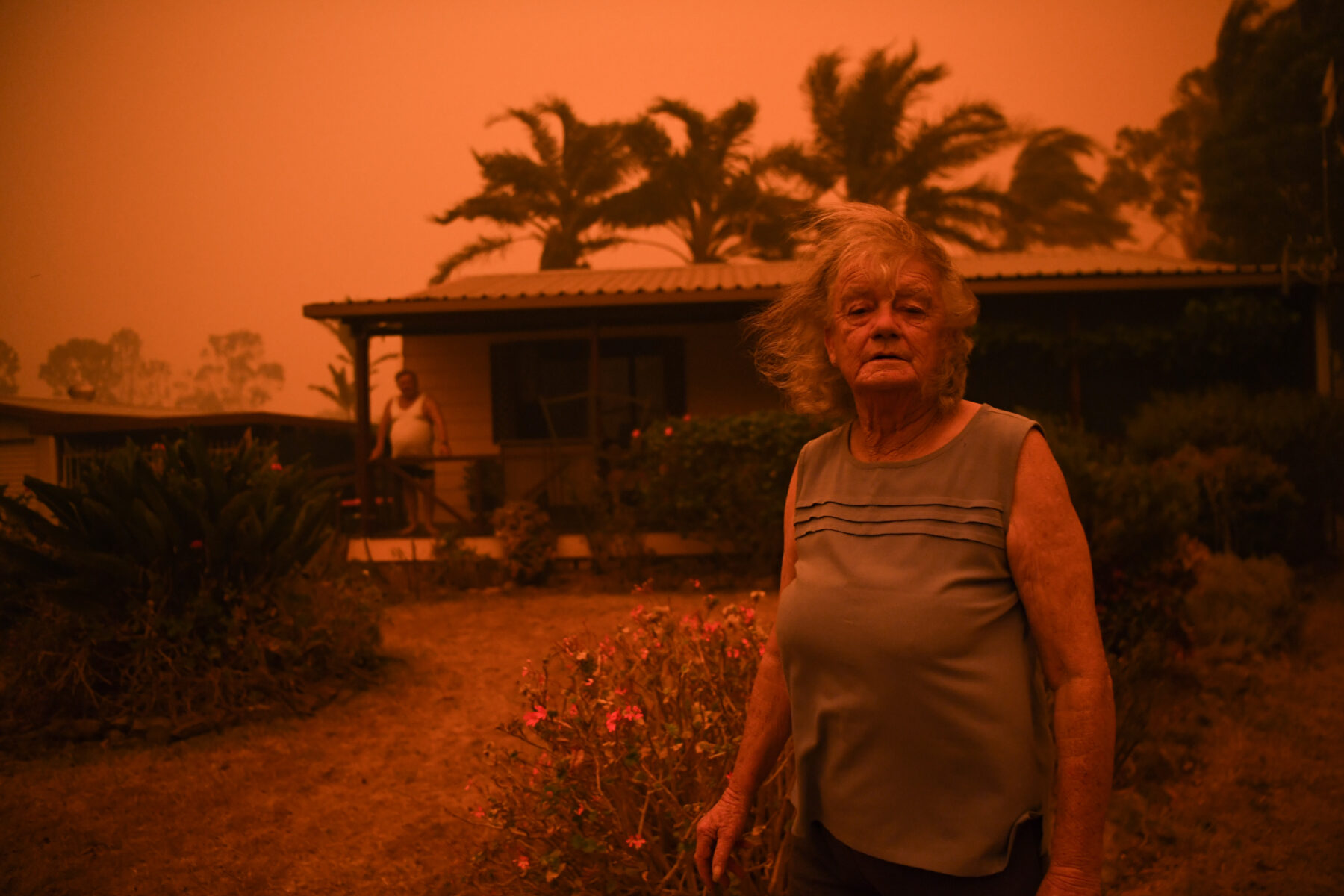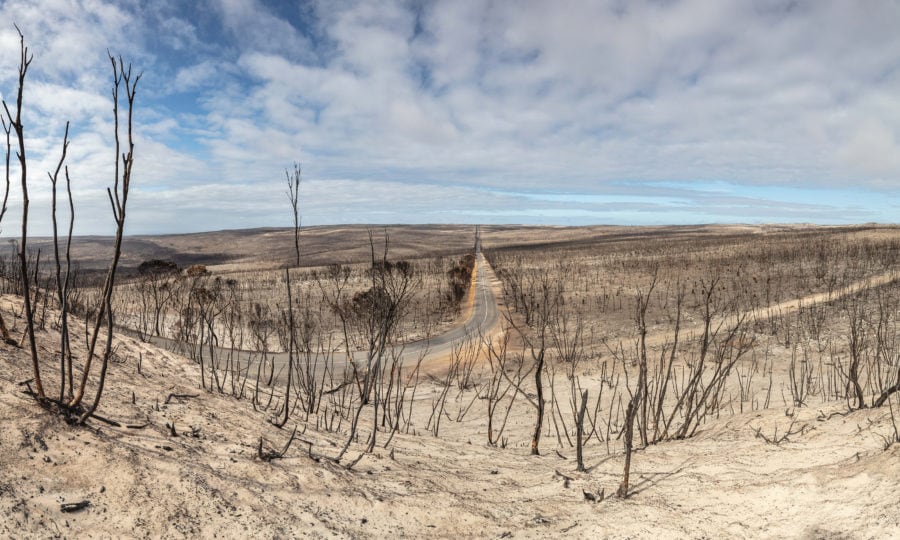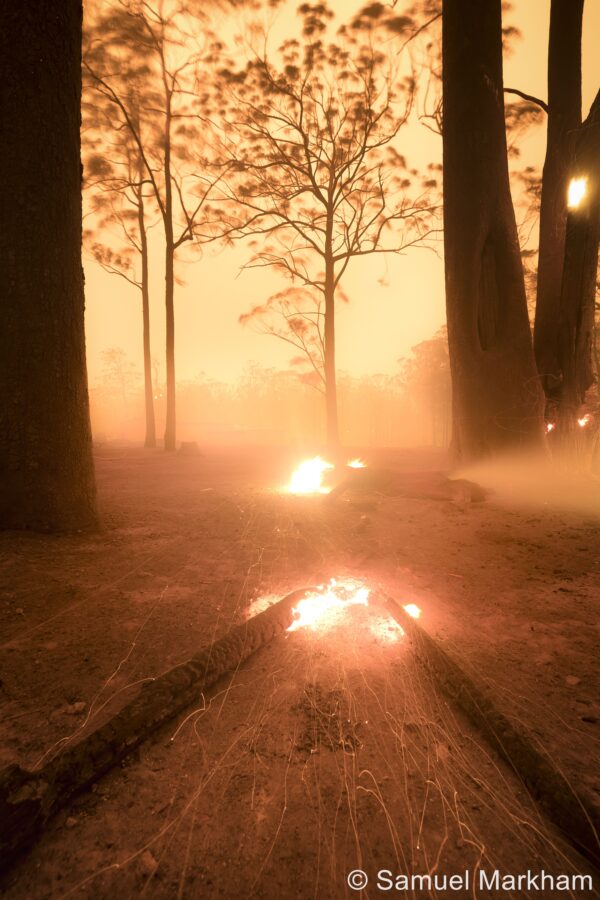In early January 2020, photojournalist Tracey Nearmy arrived in Nowra, on the New South Wales South Coast, to photograph the pyrocumulonimbus firestorm that was developing outside the town. The blaze stretched deep into the atmosphere and produced its own weather, generating pyrogenic lightning that sparked new ground fires.
When the fire season that became known as Black Summer began early in the spring of 2019, language quickly evolved to capture the ferocity and scale of the disaster, with “megafires” and “gigafires” describing the blazes that merged and burned for weeks in places such as the Snowy Mountains and Blue Mountains. By 20 December 2019, the Gospers Mountain megafire in the Blue Mountains had destroyed an area seven times the size of Singapore. On New Year’s Eve the Australian Defence Force carried out mass evacuations, and beaches at Merimbula in NSW and Mallacoota in Victoria were packed with terrified families.
The world was entering a new era of climate instability, and Black Summer was the ecological “canary in the coalmine”. Global attention fixed on Australia and foreign media scrambled to find photographers with the specialised skill set to go into the field. They looked to staff, such as Tracey Nearmy, at local media outlets, who’d spent years working alongside fire authorities and had an understanding of fire behaviour.
On 3 January 2020, Tracey was on assignment courtside, covering a tennis tournament in Brisbane. She was asked to get to Nowra quickly to photograph the pyrocumulonimbus near the town. She arrived the following day as the ominous storm cloud loomed, generating peals of thunder and turning the sky blood red. On Nowra’s outskirts she came across a barefoot Nancy Allen and her husband, Brian, dressed in a singlet, shorts and thongs, trying to defend their home with a garden hose. Their neighbours had already left, as had the police (who’d urged them to evacuate). “Nancy asked me if I thought she should stay or go, and I said to her, ‘I think you should go’,” Tracey recalls. “Nancy’s expression in this photograph summed up the shock and disbelief many Australians felt at the ferocity and enormity of these fires…the overwhelming fear of not knowing where, or which way, she should go, or what she should do.”
The approaching fire front – the Currowan fire – had menaced the area since November, and already nearly obliterated Mogo and Cobargo, south of Batemans Bay. It would burn for 74 days across nearly 5000sq.km and destroy 312 homes. Remarkably, the Allens’ house was spared and Tracey’s photo was published worldwide.
This year Nancy and Brian have the water tanks and drums full, the gutters cleared in preparation.


